Rescuers in the Rubble
Highly trained Miller School and UHealth mass casualty experts played key roles in a search-and-rescue operation following a condo tower collapse that killed 98 people
By Robert C. Jones Jr.
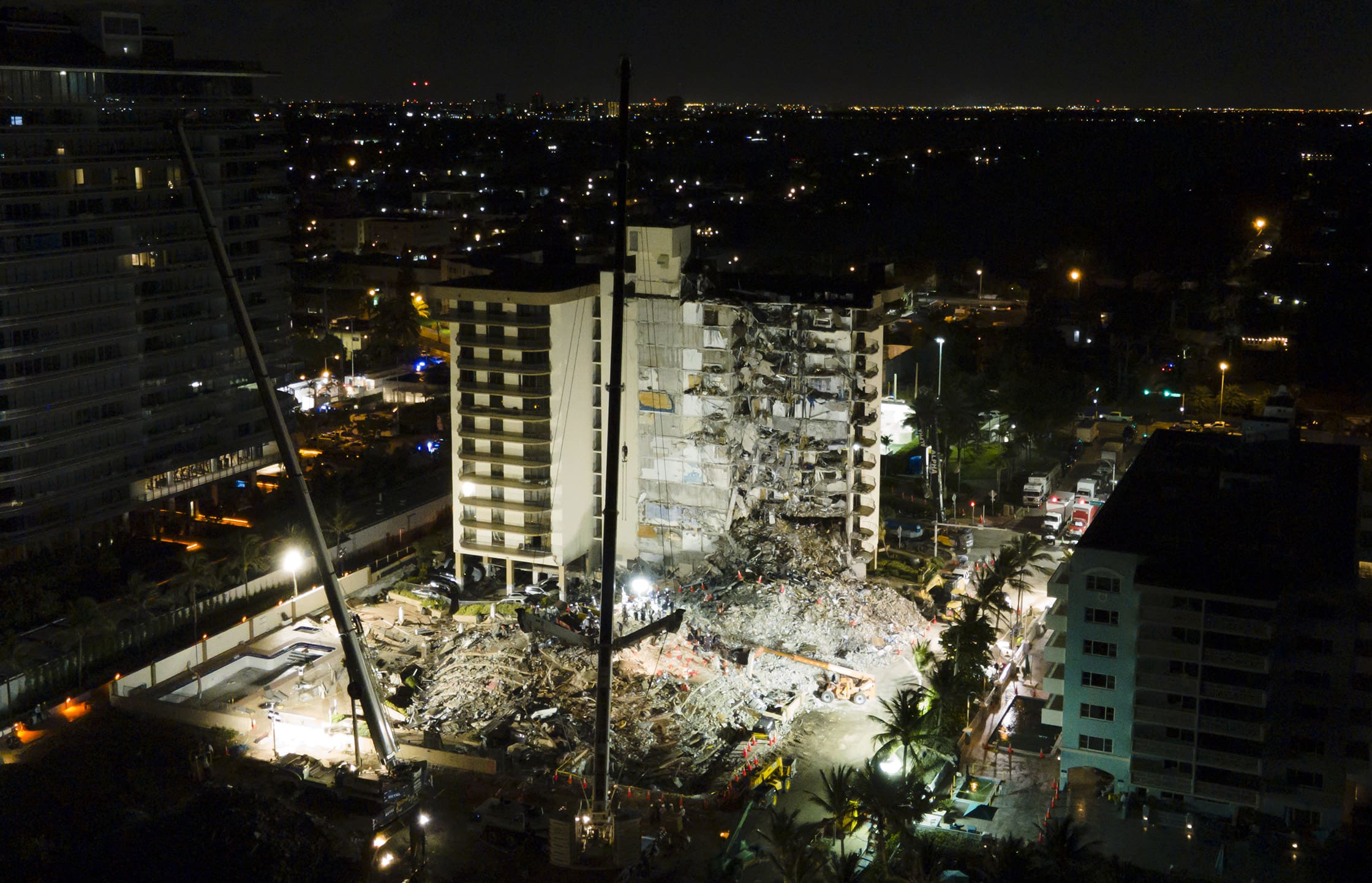
It was in the wee hours of Thursday, June 24, when Vincent Torres, emergency management director for the University of Miami Health System, was wakened by a phone call from the administrator on call at UHealth Tower telling him that most of the 12-story, 136-unit Champlain Towers South condominium in Surfside, Florida, had collapsed, and that Miami-Dade Fire Rescue had activated level 5 Mass Casualty Incident protocols.
Torres quickly made contact with county emergency management officials and reviewed available intelligence. Then he got dressed and drove to work, met with his emergency management team and reviewed some of the early reports coming out from the scene. Those first communiqués were grim. Few people had survived the collapse, and the handful of survivors who were plucked from balconies that were still intact had been transferred to other medical centers.
Nonetheless, the Hospital Incident Command Team made the decision to initiate a partial mass casualty activation, ordering additional liters of blood and ensuring that adequate drugs were in place in UHealth Tower’s emergency department and pharmacy.
“Outside of training, we usually don’t talk about level 5 incidents — which are 1,000 or more casualties — because they’re so rare, but we were ready to help save lives,” Torres said. “Our response to what happened in Surfside demonstrated the readiness of UHealth Emergency Management and the Hospital for a mass casualty incident.”
Watching and Waiting
The condo collapse took only 30 seconds, but anxious friends and relatives stood vigil for days as rescue turned to recovery.
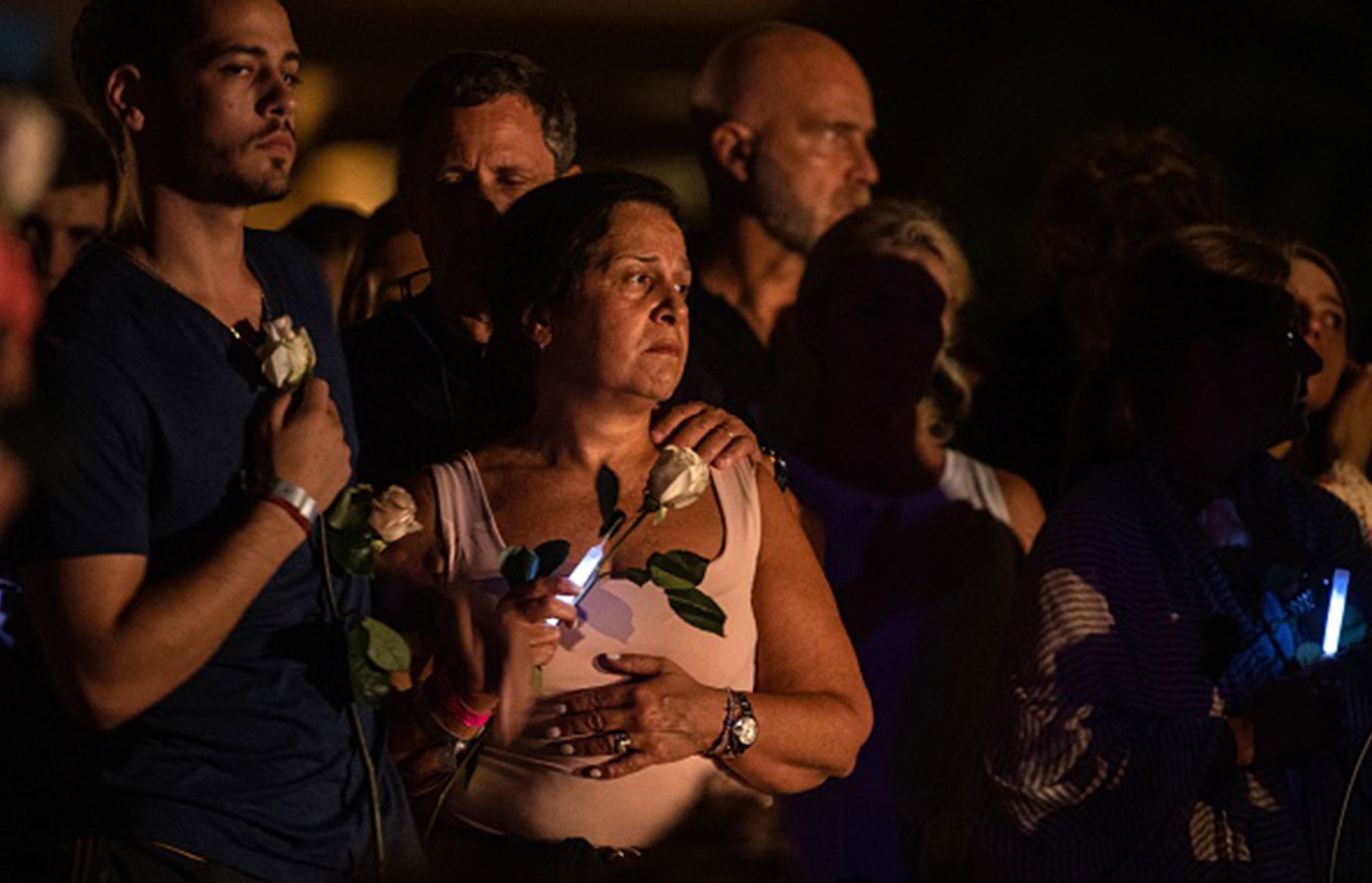
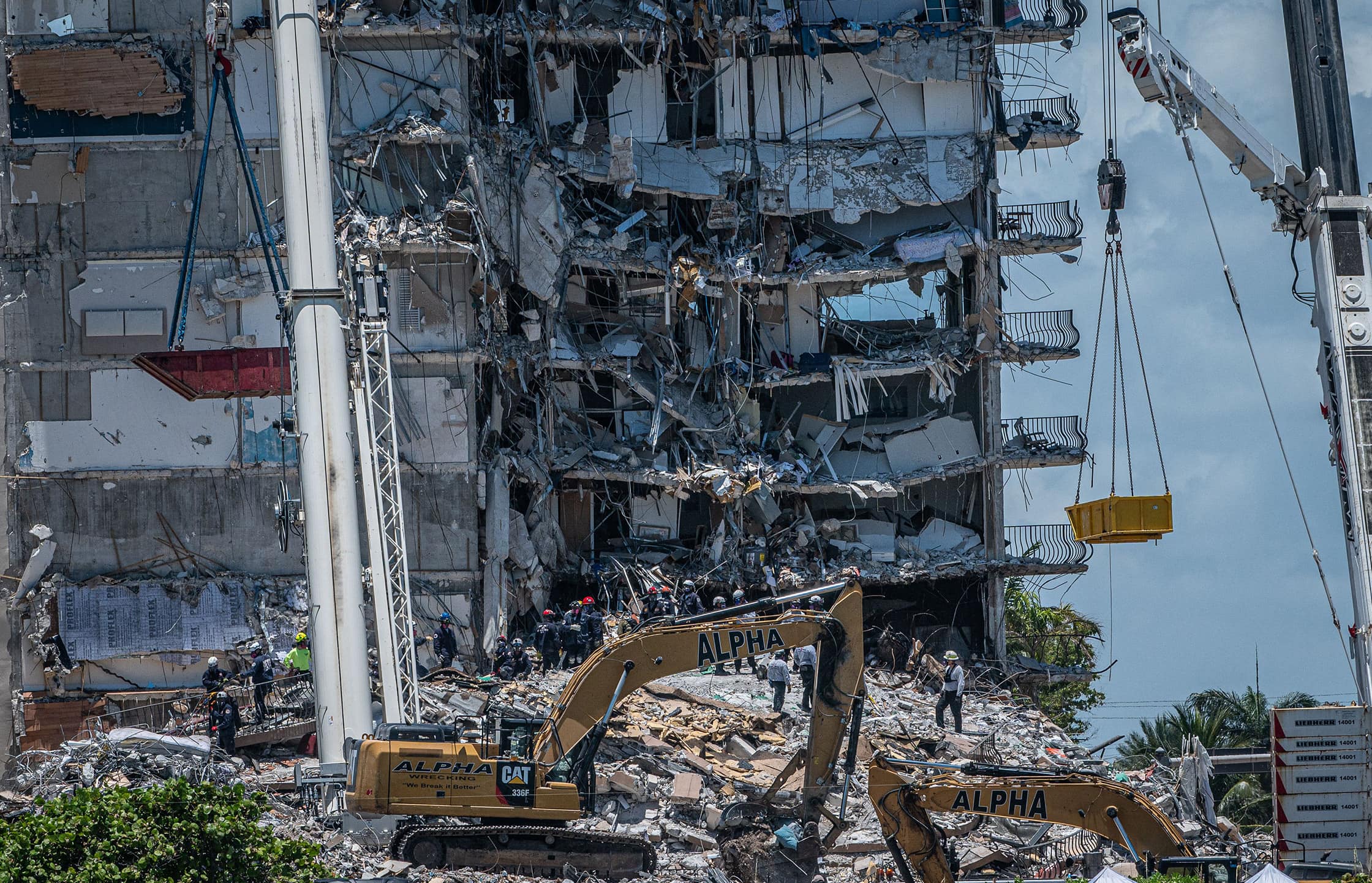
For trauma surgeon Howard Lieberman, M.D., the first call came from a front desk staffer at UM/Jackson Memorial Hospital’s Ryder Trauma Center at 6:24 a.m.
“Do you want to reschedule your cases for the day?” the caller asked. A mass casualty incident had occurred, and Dr. Lieberman would probably be needed on-site, he was told.
Multiple fire-rescue and law enforcement agencies were already at the scene, and it would just be a matter of time until Dr. Lieberman, an assistant professor of surgery in the Division of Trauma and Surgical Critical Care at the Miller School of Medicine, would be deployed as a medical manager of Miami-Dade Fire Rescue’s Urban Search and Rescue Team/Florida Task Force 1, a role in which he has served for nearly three years.
Dr. Lieberman, along with blood and equipment he obtained from Ryder, were taken by ambulance to Surfside just after noon to relieve another trauma surgeon who had been on the scene since early morning. The sight of the pancaked structure evoked memories of 9/11.
“It had the same feel, the same look — a building that was there and then suddenly wasn’t,” he recalled.
But there was no time to reflect. He had to spring into action. And Dr. Lieberman did, tending to the injured and overseeing the medical well-being of Task Force 1 team members who navigated the precarious piles of rubble and debris — some with rescue and recovery dogs — in search of survivors.
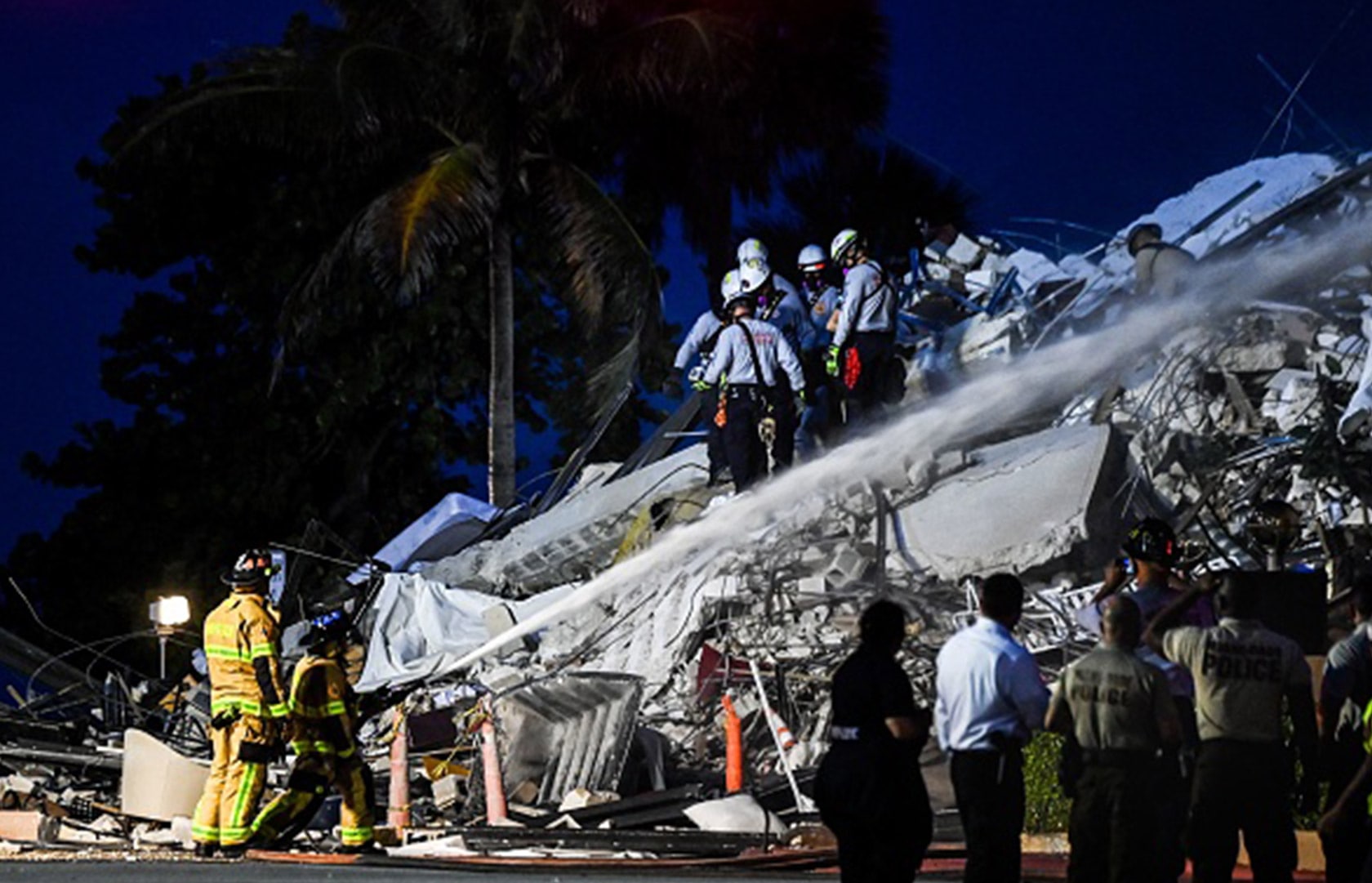
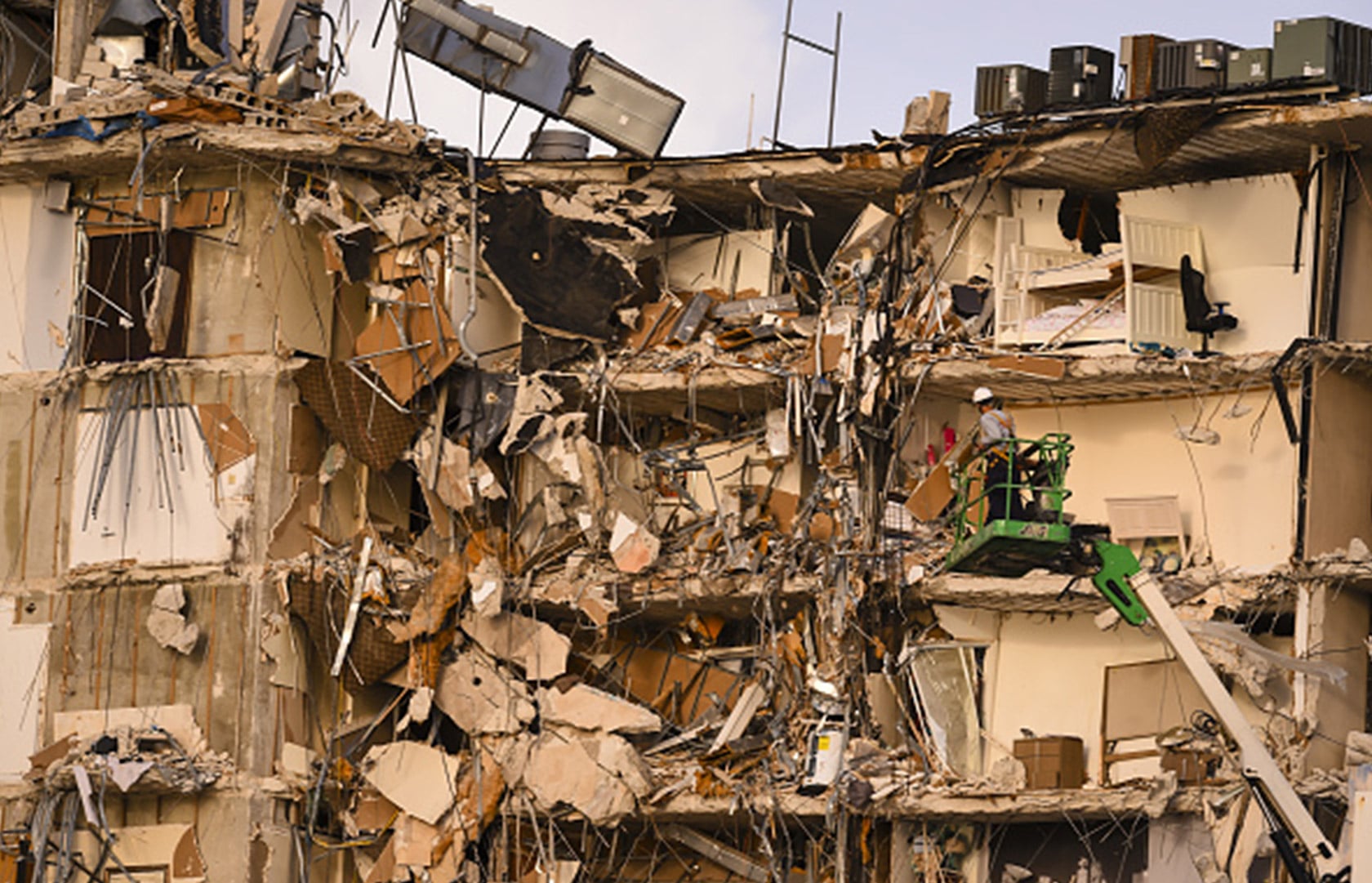
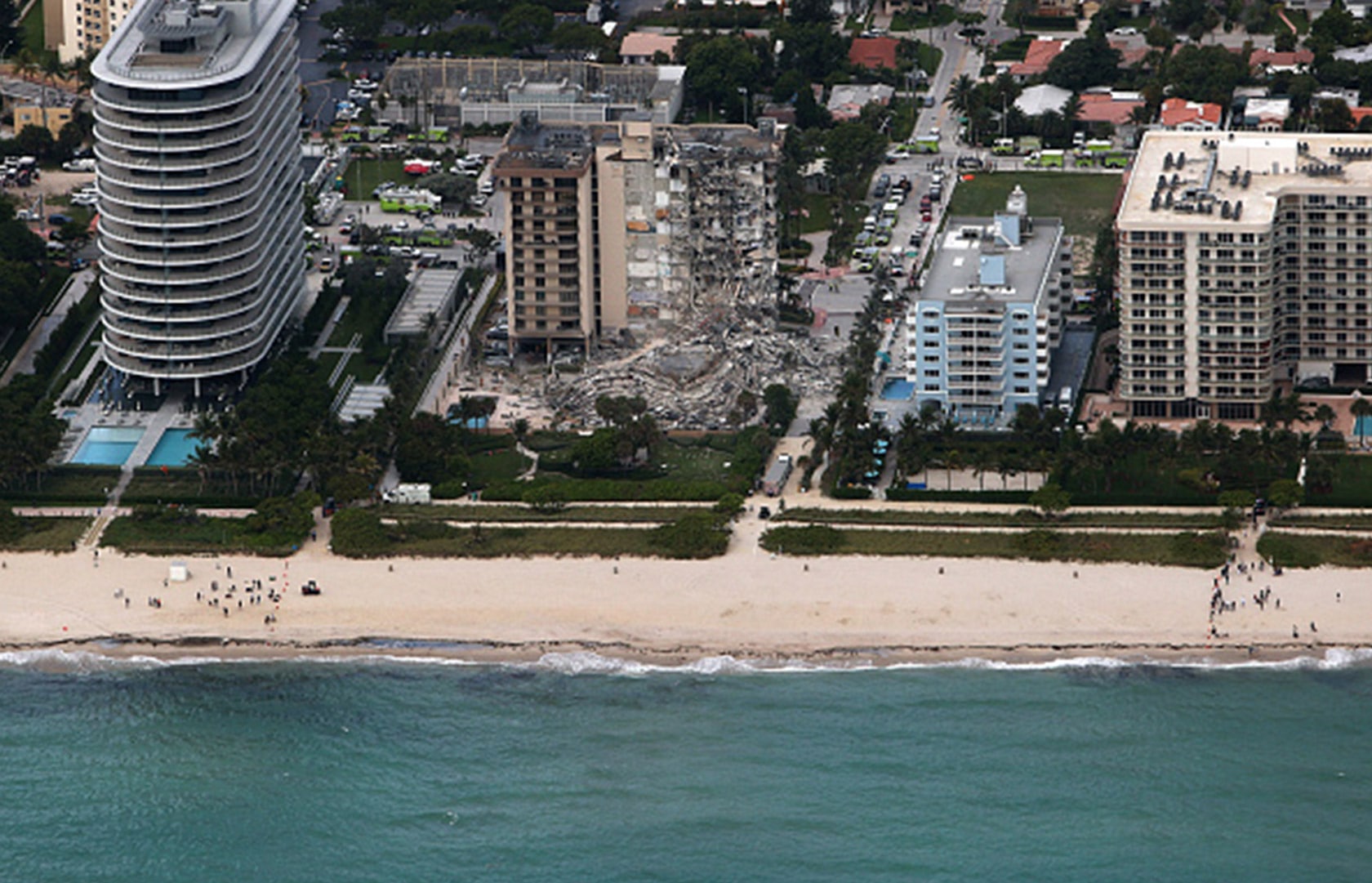
Miller School physician Brandon Parker, M.D., first learned of the tragic event while watching the early morning newscasts. Then, after a series of text messages from colleagues, he realized that, like Dr. Lieberman, he would soon be ordered to the site — in his case as medical team manager of Task Force 2.
Before arriving at the scene, Dr. Parker, also an assistant professor of surgery in the Division of Trauma and Surgical Critical Care, had only seen images of the condo collapse on television and social media. Being at the site gave him a completely new perspective.
“It was surreal,” he said. “To be up close and see the devastation that was contained in that pile took the words away from all of us.”
Dr. Parker’s primary responsibilities were to care for team members as they rotated off the debris field and to render medical aid to any survivors. But whenever he wasn’t acting in that capacity, he lent his muscle to the effort, helping to move heavy pieces of concrete and erect operational and sleeping tents.
“It changed me forever,” said Dr. Parker, who kept a diary during the experience. “It was always our objective to bring people out alive, and that’s what kept us on the debris pile even when we were told to come off. At times, the family members of the victims were allowed on the scene. We were able to see and hear their anguish, and that drove us to search even harder.”
Having another Miller School colleague on-site, pediatric critical care physician G. Patricia Cantwell, M.D., was also “tremendously helpful,” Dr. Parker said.
For Dr. Cantwell, urban search and rescue has been a 27-year endeavor. She joined Task Force 2 in 1994 and has been sent to just about every type of disaster imaginable, from hurricanes and earthquakes to building collapses. Team members must be prepared to deploy at the drop of a hat.
“The mantra is, everyone has a go-bag,” Dr. Cantwell said. “We’re supposed to be prepared to be entirely self-sufficient for at least 10 days, and if we get the call, we should be able to leave within six hours.”
When Dr. Cantwell arrived in Surfside, the disaster site immediately brought back memories of the Twin Towers collapse.
“The footprint was smaller than Ground Zero, but the type of collapse, being just a complete pancake, was very similar,” she said.
Dr. Cantwell is thankful for the time served on Task Force 2.
“It’s truly been a privilege to work with such a committed group of women and men who work relentlessly to get something accomplished,” she said.
Treating First Responders
With no survivors found, UHealth trauma surgeons, from left, Howard Lieberman, Brandon Parker and G. Patricia Cantwell focused on the well-being of rescue team members.
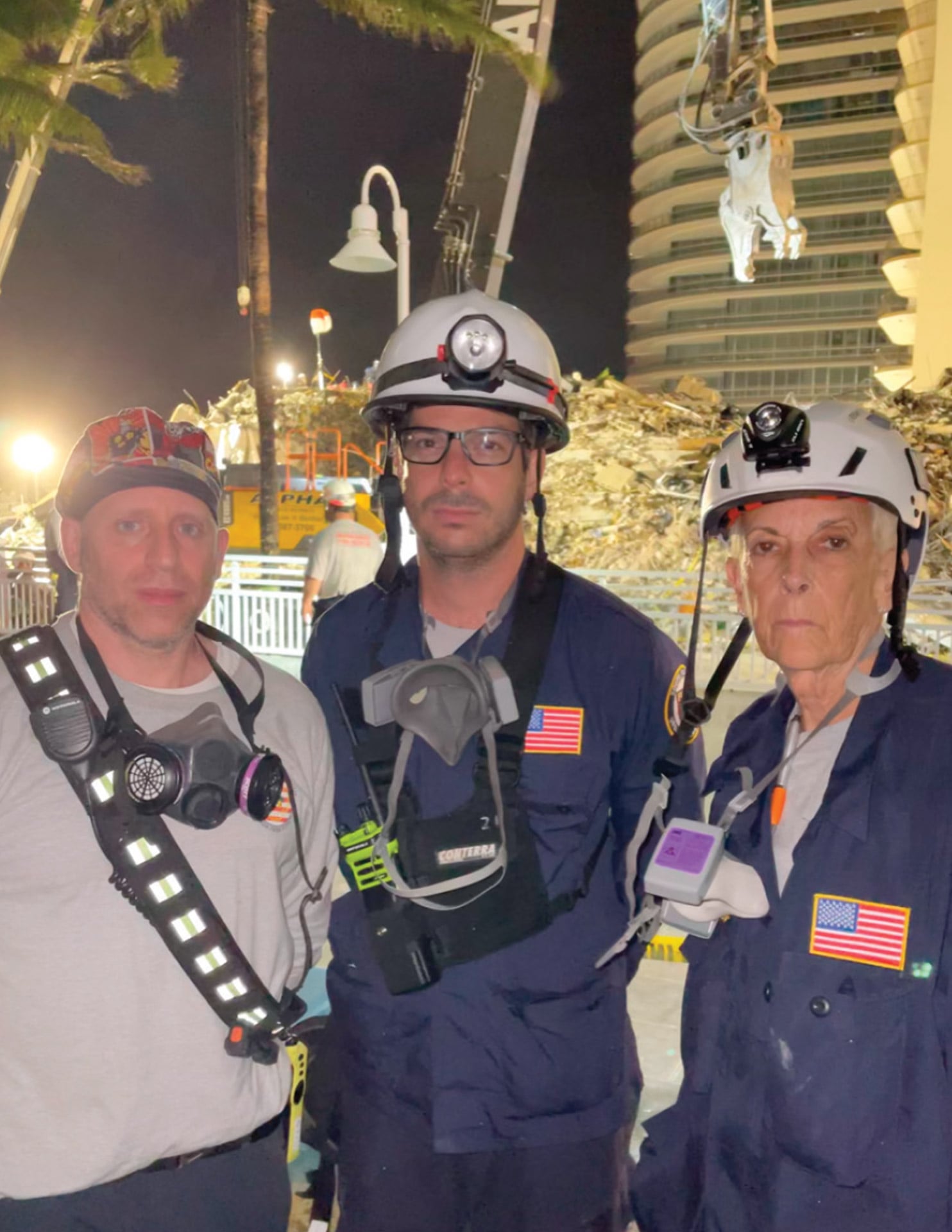
By Saturday, UHealth Emergency Management had deployed its mobile clinical unit to the disaster site, allowing first responders to support their command center operations. UHealth also provided masks to first responders. For the county, it supplied a list of University grief counselors who were at the ready if needed.
Elyzabeth Estrada, UHealth’s emergency manager, was temporarily reassigned to the collapse site, supporting Miami-Dade County’s Office of Emergency Management, for which she worked before coming to UHealth.
Working on-site was especially demanding for Estrada. She had to quell whatever temptation she had to look at the rubble pile and instead concentrate on supporting the rescue effort.
“In emergency management, you learn to compartmentalize,” she said. “I had to have tunnel vision. I knew that my role was to support those who were searching for survivors.”
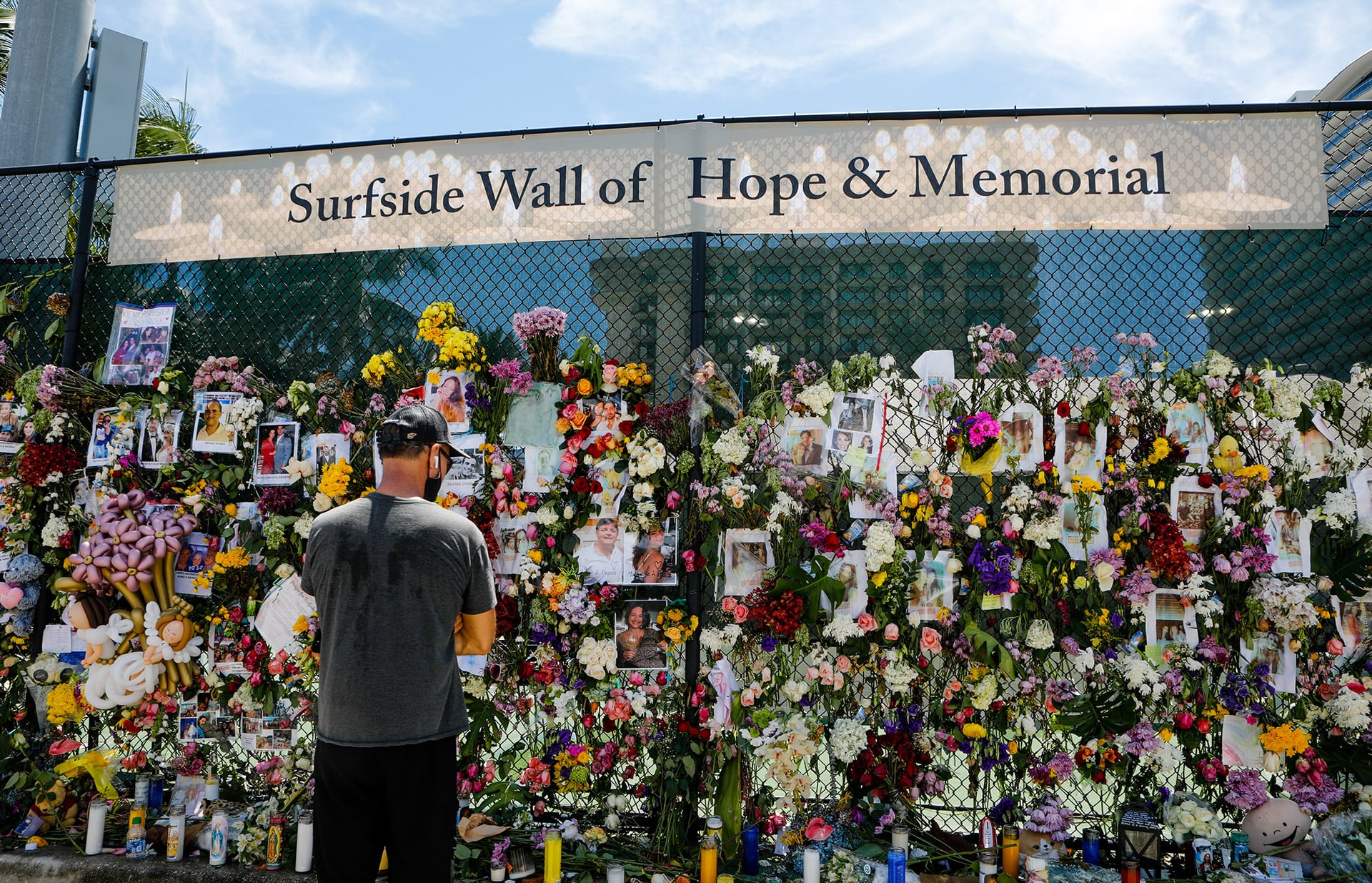
Photos, messages and flowers mixed expressions of hope and grief, and exhausted first responders gave each other emotional support.
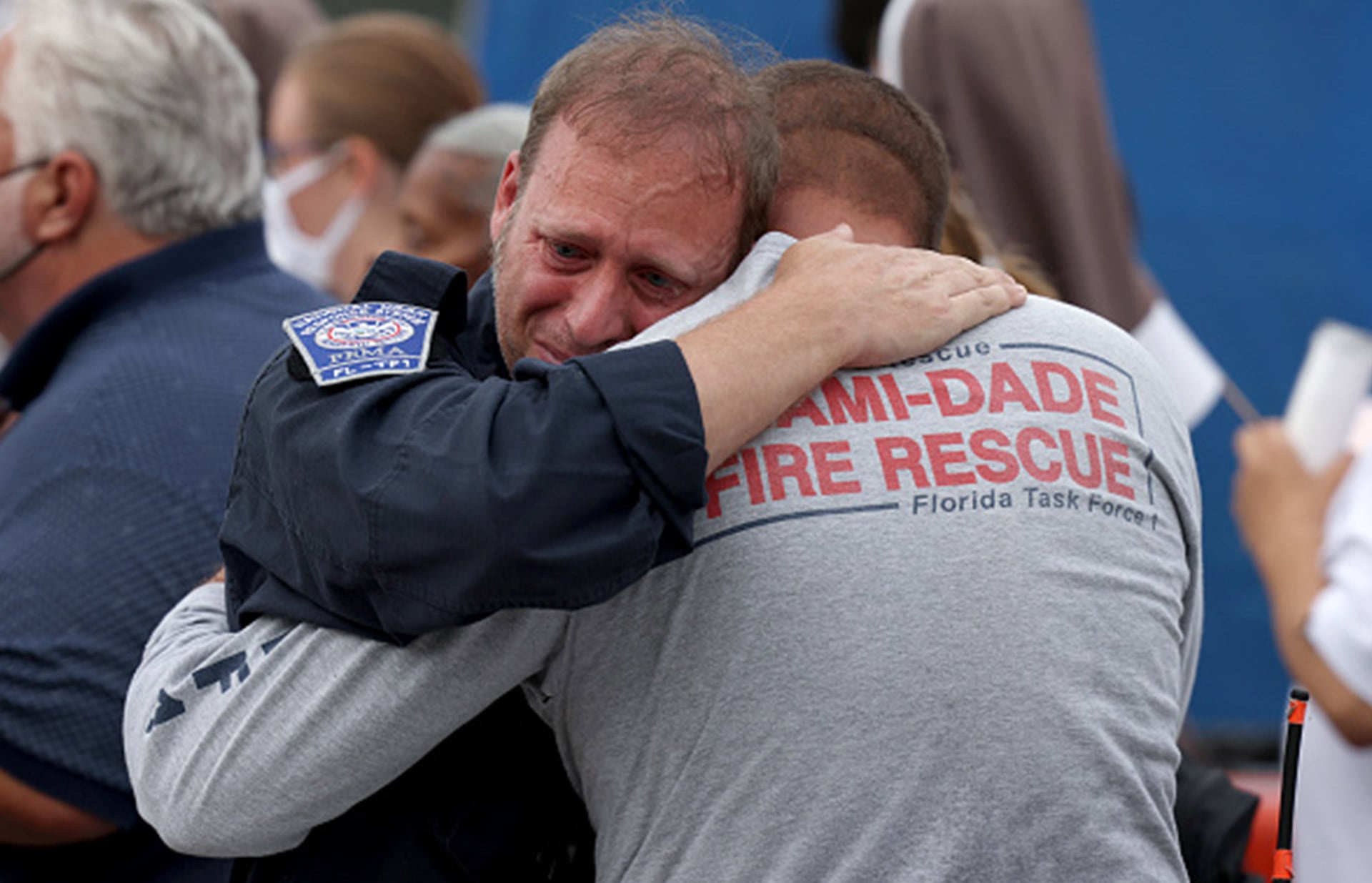
Even as the days passed, those working at the site remained hopeful that someone would still be alive and could be saved, said Obed Frometa, a lieutenant with Miami-Dade Fire Rescue and a Task Force 1 team member. His job was to gather and package vital information from first responders as they rotated off the debris field, refining that data and providing it to the next team that continued the search.
He and many other first responders praise the extensive training in rescuing and treating victims of mass casualty incidents that is given at the Miller School’s Michael S. Gordon Center for Simulation and Innovation in Medical Education. Frometa is also a lead paramedic instructor at the Gordon Center.
More than 18,000 first responders and front-line workers from across Florida train at the center each year, and its training systems have been used at more than 700 institutions in Florida, at more than 2,200 institutions throughout the nation, and in 60 countries, according to S. Barry Issenberg, M.D., the Michael S. Gordon Endowed Chair, professor of medicine and medical education, and director of the center.
“There are very few major academic research institutions in the U.S. that have a close and active collaboration with its first-responder community,” Dr. Issenberg said. “What makes the Gordon Center truly unique is the development of life-saving training curricula that is disseminated to other state and national programs through a train-the-trainer model.”
Ten days after the initial event, the remainder of Champlain Towers South was demolished because its instability posed a threat to the rescue workers and slowed the pace of their work. The collapse, which ultimately took 98 lives, hit close to home for many of the team members, especially Dr. Lieberman.
“A lot of us are separated from the victims by only one or two degrees,” he said, noting that a former medical school classmate lost three family members in the collapse. “There’s devastation, there’s heartache, there’s loss of life, and there are victims who need to be found. But there’s a commonality to all of these disasters — that we’re here to save lives.”
Staying busy helped Dr. Parker and other first responders cope.
“There were rotations when I came off and other doctors were active. In some ways, I think it was harder to deal with the stressors when we were not on scene,” he said. “Being there, being active and feeling like you were contributing to the overall mission kept us going.”
Keeping the First Responders Safe
A mission-driven collaboration helped monitor and mitigate dangers at the Surfside site
By Maya Bell
About 30 hours after the collapse of the Champlain Towers South condominium, Alberto Caban-Martinez, D.O., Ph.D., M.P.H., drove his packed SUV to the disaster site. Escorted through the chaos by an ambulance, the deputy director of Sylvester Comprehensive Cancer Center’s Firefighter Cancer Initiative, or FCI, was on a mission to deliver thousands of baby wipes and a dozen decontamination kits embossed with the lifesaving motto now seen in hundreds of fire stations across Florida.
“Clean is the new badge of honor,” the large, green buckets read. Each kit contained dish soap, scrub brushes, wipes, spray bottles and hoses — items that Dr. Caban-Martinez hoped the search-and-rescue personnel would be able to use to eliminate the microscopic toxins that would cling to their skin and gear after their 12-hour shifts sifting through the debris pile.
“Prevention is key,” explained Dr. Caban-Martinez, an associate professor of public health sciences at the Miller School. “You do not want to be marinating in these compounds that are circulating in the air.”
Soon after, FCI founding director Erin Kobetz, Ph.D., M.P.H., ordered hundreds of air-filtering P-100 respiratory masks to replenish the supply at the collapse site. Turning an unthinkable tragedy into a valuable learning opportunity, she and Dr. Caban-Martinez expanded FCI’s role in Surfside to help launch an environmental and exposure monitoring program that not only kept first responders safer on the ground, but also will inform future guidelines for protecting them from another occupational hazard likely to add to their risk profile.
“We were uniquely positioned to take the evidence gleaned from our ongoing effort to address why firefighters are at increased risk of cancer incidence and mortality, and rapidly translate it to a disaster that could augment this risk substantially,” said Dr. Kobetz, Sylvester’s associate director for population sciences and cancer disparity, and the University’s vice provost for research and scholarship.
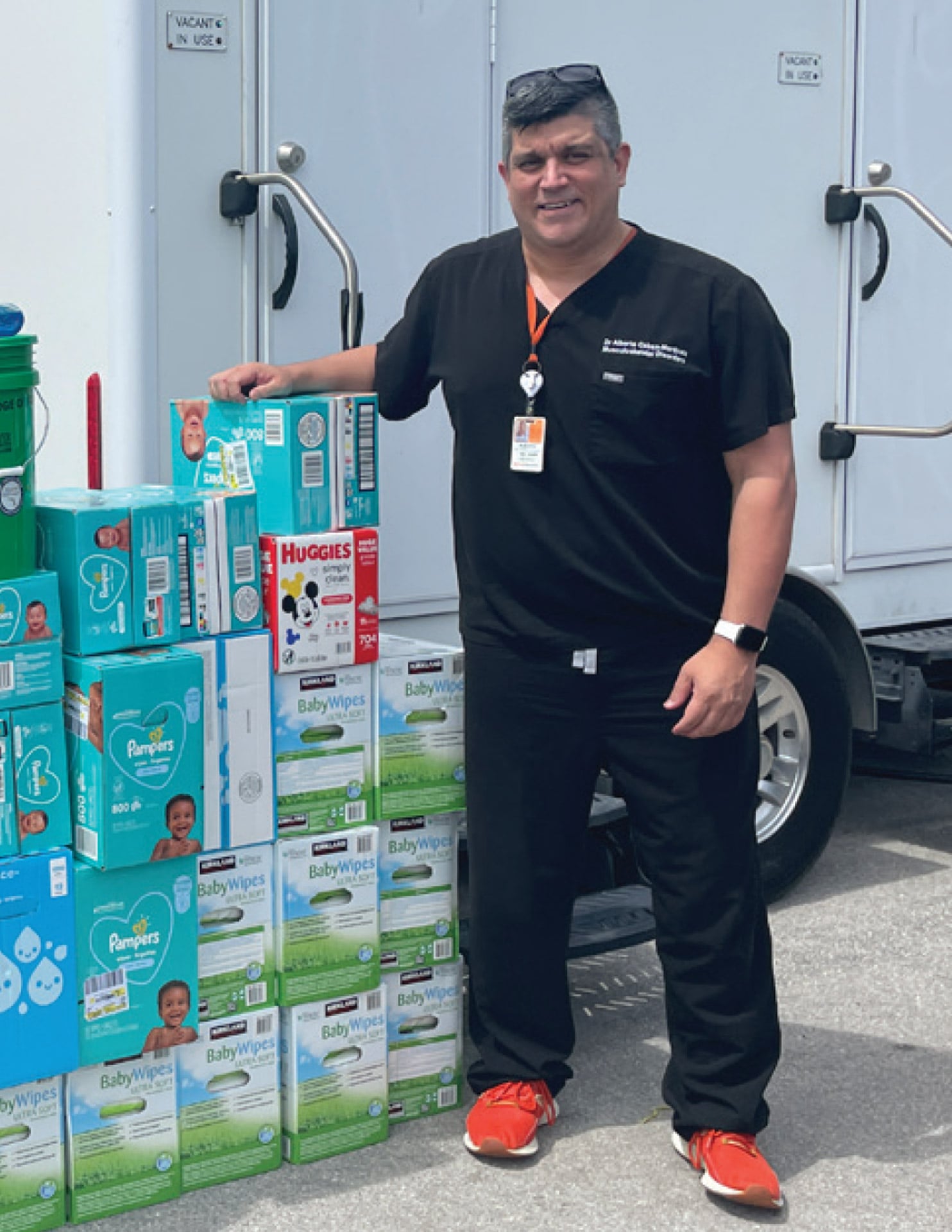
Dr. Alberto Caban-Martinez with donated supplies.
Measuring the Risks
Among their efforts, the Miller School researchers collaborated with firefighters to develop decontamination and other health and safety protocols at the disaster site. They also spearheaded the collection of real-time and longer-term environmental data by Naresh Kumar, Ph.D., a professor in the Department of Public Health Sciences who specializes in the health effects of pollution, and other colleagues and students from across the University. Their tools included silicone wristbands worn by first responders and portable air samplers and sensors used to monitor invisible particles and gases.
The first exposure study — the results of which Dr. Caban-Martinez reported at the American College of Epidemiology’s annual meeting in September — found that rescue workers were exposed to high concentrations of polyaromatic hydrocarbons, a massive class of known and probable carcinogens. Dr. Caban-Martinez also launched SAFE — the Surfside Assessment of First-Responder Exposures study — which aims to collect two years’ worth of toenail clippings from hundreds of firefighters who worked on the debris pile. Like slow-growing rings of a tree, he explained, toenail clippings can provide snapshots of a person’s exposure to heavy metals. Additional studies are ongoing throughout UM.
“Firefighters will do whatever it takes to do their job, which is saving lives without considering the repercussions,” Dr. Caban-Martinez said. “It’s our job to make sure they know how to protect themselves from hazards and reduce their risks.”


